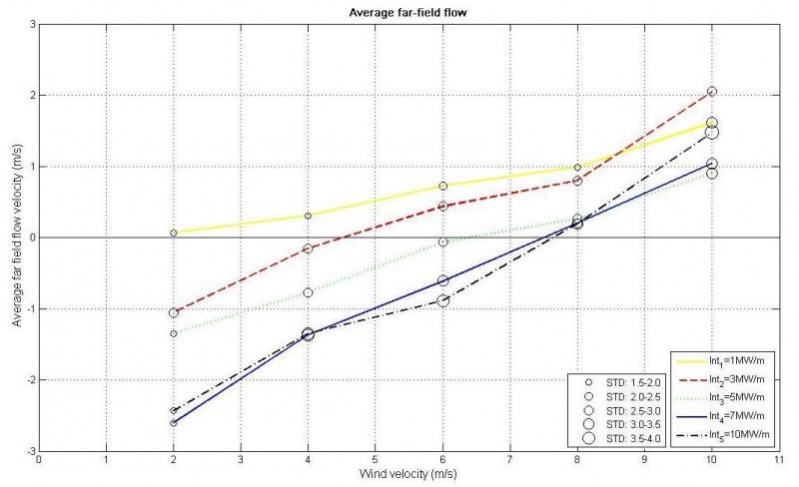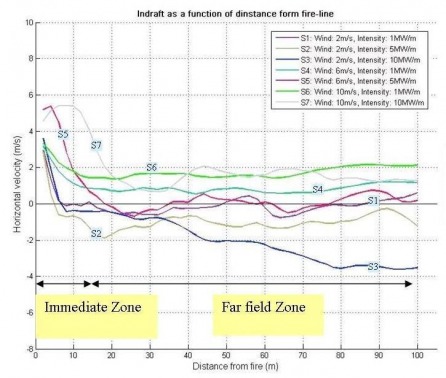Results
The proposed model has been applied to conduct a series of simulations testing various fire-intensity and wind conditions. The results are presented in form of graphs below. It is noted that these predictions should not be used in fighting fires until validation has been carried successfully.
Conditions appropriate for counter-firing:
In-draft, which is necessary for for counter-firing, occurs when the Average Flow Velocity is less then zero. The graph above shows that only certain fire and weather conditions meet this criterium. Note that all fires of intensity less than 1MW/m as well as all fires in winds stronger than 7m/s are inappropriate for counter-firing.
Placement of counter fires:
Downwind from the wildfire two distinct zones are observed: Immediate Zone (0-15m) and Far-field Zone (>15m). Flow in Immediate Zone is observed to be away from the wildfire which suggests that counter-firing there is inappropriate. Flow in the Far-field Zone may be towards but may be away form the wildfire depending on the fire and weathe conditions. Far-field Zone is where counter-firing could potentially be applied depending on the fire and wind conditions (see Conditions appropriate for counter-firing above)
Flow around wildfire:
Animation of flow behavoir:
In the simulation presented to the right notice:
- Formation of a boundary layer upwind form fire;
- Fluctuating nature of the flow;
- Formation of small and large scale vortices;
- Periodic occurrence of in-draft.
Simulation of flow: Wind 2m/s, Fire intensity 1MW/m.
Detailed animations:
Simulations below: Flow in the whole of the domain (LEFT); Temperature distribution in the right side of the domain (RIGHT)
Simulation showing flow in the whole of the domain.
Temperature distribution in the downwind side of the domain.




